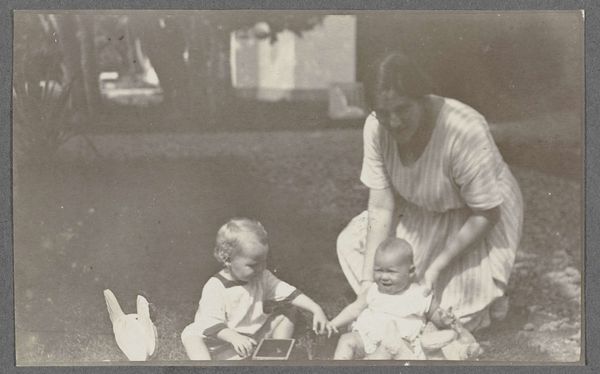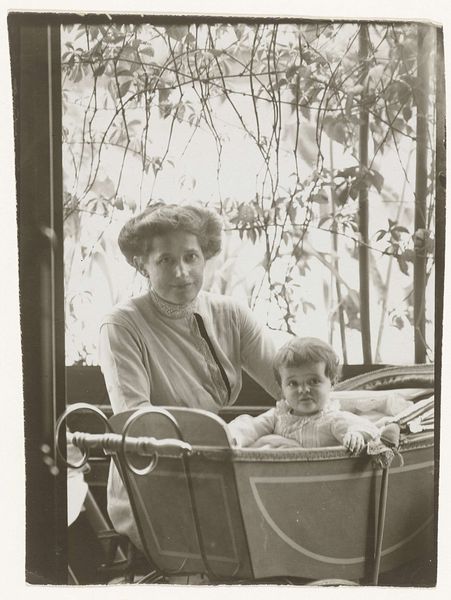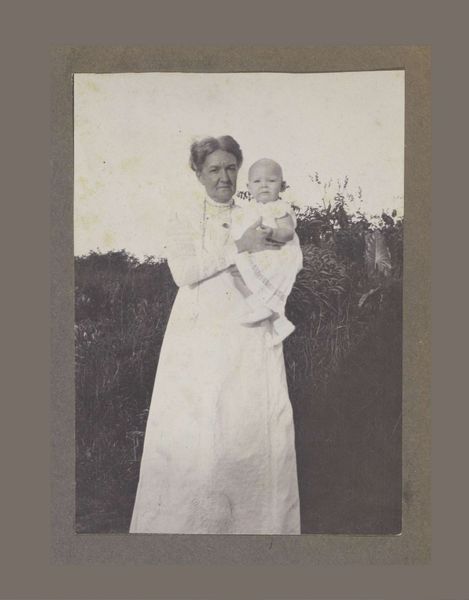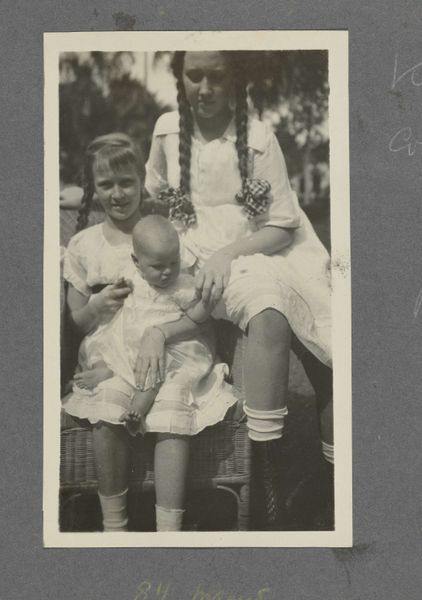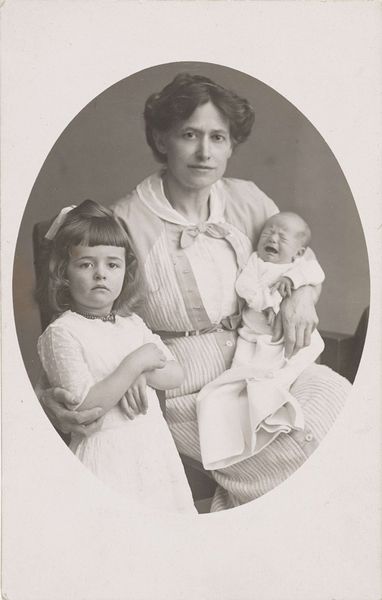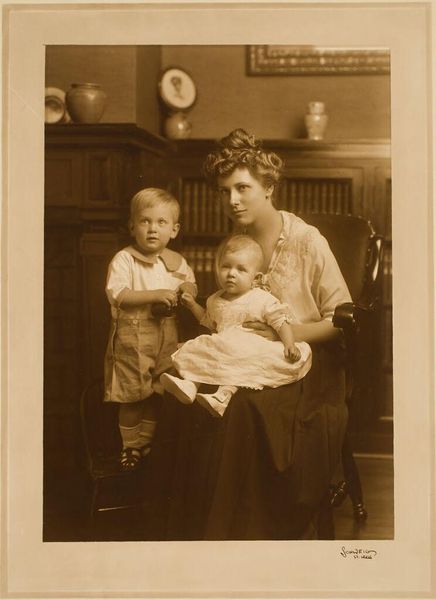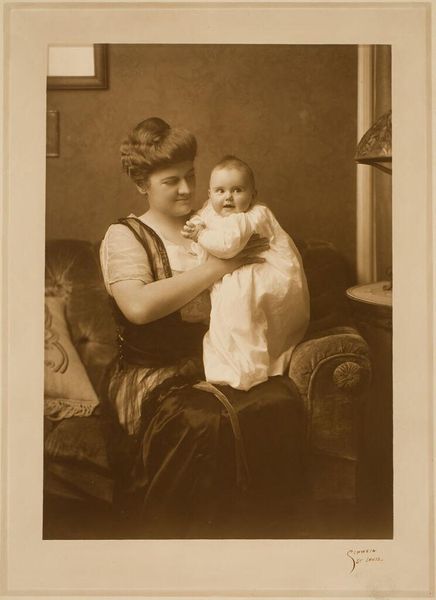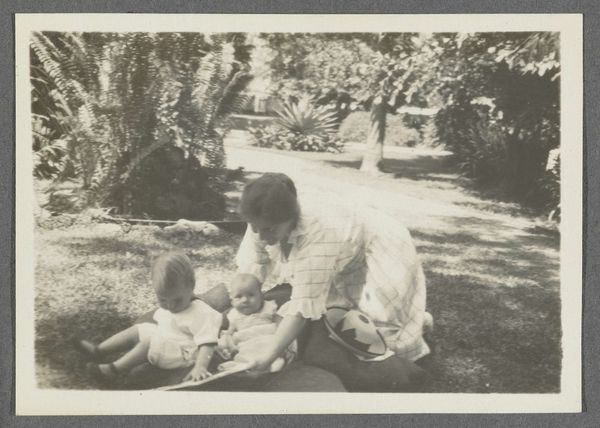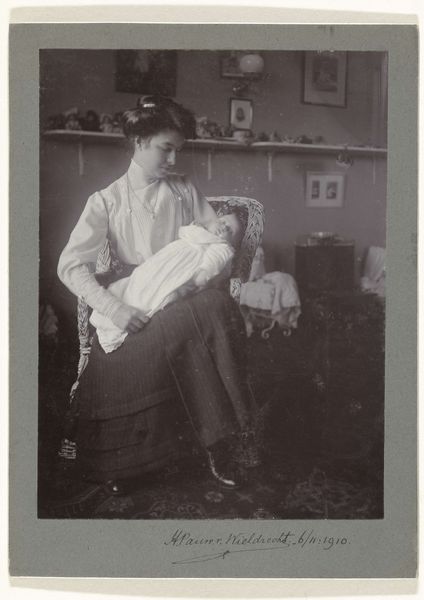
Tine Kleiterp-Vermeulen en haar kinderen Klaas en Tiny op een grasveld in Madje op Celebes 1922
0:00
0:00
photography
#
portrait
#
print photography
#
still-life-photography
#
photography
#
historical photography
#
realism
Dimensions: height 107 mm, width 65 mm
Copyright: Rijks Museum: Open Domain
Curator: This is a photographic print from 1922 depicting Tine Kleiterp-Vermeulen with her children Klaas and Tiny in Madje, Celebes. Editor: My immediate impression is one of gentle stillness. The monochromatic tones create a sense of timelessness, and the subjects seem captured in a quiet moment of domesticity. Curator: Yes, it offers us a glimpse into a colonial domestic sphere. This was a Dutch family living in what is now Indonesia, and the photograph speaks to themes of motherhood, childhood, and colonial presence. We must address the context in which such seemingly simple family portraits were taken, and the power dynamics embedded within these representations. Editor: From a formal perspective, notice how the light subtly models the figures, giving them a soft, almost sculptural quality. The composition, while seemingly simple, employs a careful balance between the figures and the surrounding grassy field, creating visual harmony. Curator: The image performs as an artifact embedded in power relations that promoted colonial governance. Photography, during that time, was also a tool for creating and maintaining an identity in a faraway land. Tine, Klaas and Tiny were real people; the photo helps us in the recovery and exploration of historical narratives, particularly focusing on intersectional approaches relating gender, family and race. Editor: There’s a delightful contrast, too, between the softness of the figures and the starker lines of the building in the background. And have you noticed the children's toys? A counterpoint to the natural elements… Curator: Absolutely, let's think about the materiality, the physical print. It would have been held and passed around, acting as a form of communication, of representation of themselves within the broader narrative of colonial history. I can only speculate about this image. But there may be ways it contributed to building and shaping identity. Editor: Indeed, these details give a sense of intimacy. Examining the textural contrasts—the smooth skin of the children, the rough fabric of Tine's dress, the feathery grass—deepens the aesthetic appreciation. I find myself drawn to the simple beauty of its forms and textures. Curator: Considering the context and also appreciating the beauty... I suppose we can only try to engage in difficult dialogues surrounding representation, history, and power structures and appreciate the artistry inherent to photography as a material artifact. Editor: Precisely. It is a testament to how much a seemingly simple arrangement of forms can speak.
Comments
No comments
Be the first to comment and join the conversation on the ultimate creative platform.
